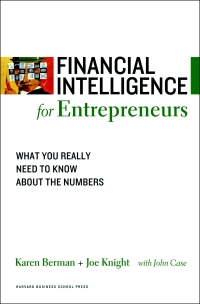A large market has developed for "freemium" games, which are free to play but include offers of paid content that may help players win more orten. Many of these games also have multiplayer options, where players can join with their friends to either compete or form teams and challenge other teams. When modeling such games, well thus assume that the games are more enjoyable when other people play them as well. Consider a situation where two gamers are choosing a new freemium game to play. There are two options: Clash of Clashers and Castle Royale. Castle Royale is a slightty more fun game overall, but both gamers would rather play the same game than play different games. 1st attempt Part 1 (0.5 point) The normal-form game box below outlines the basic interaction, each garner must choose a game, and both gamers get higher payoffs if they choose the same game. The payoffs here can be interpreted as the utility cach player gains from playing if gamer 1 plays Castle Royale and Gamer 2 plays Clash of Clashers, for instance, gamer 1 receives utility of 60 and gamer 2 reccives utility of 40. What is (are) the pure strategy equilibriumaa) of this pame? Choose one or more: A. (Castle, Clasti) B. (Ctashicastle) Now suppose that the total value of each game depends on what percentage of players choose it. Then the game looks like this, where p1 is the percentage of players who play Clash of Clashers and p2 is the percentage who play Castle Royale. Suppose that two new gamers agree to both pick whichever game offers the highest absolute payoff, based on the current percentages of people playing (which everyone knows). What percentage of players does Clash of Clashers need to attract these new players? (Give your answer to two decimal places.) Part 3 (0.5 point) Seeflint Which of the following are possible long run outcomes of the game from Part 2? Choose one or more: A. Players switch over time, so sometimes more will be pliving Clash of Clashers and other times more will be playing Castle Royale B. Everyone plays Castle Royale. C. Everyone plays Clash of Clashers. D. There is a stable equilibrium in which both Barres are played by a sizable percentage of players A large market has developed for "freemium" games, which are free to play but include offers of paid content that may help players win more orten. Many of these games also have multiplayer options, where players can join with their friends to either compete or form teams and challenge other teams. When modeling such games, well thus assume that the games are more enjoyable when other people play them as well. Consider a situation where two gamers are choosing a new freemium game to play. There are two options: Clash of Clashers and Castle Royale. Castle Royale is a slightty more fun game overall, but both gamers would rather play the same game than play different games. 1st attempt Part 1 (0.5 point) The normal-form game box below outlines the basic interaction, each garner must choose a game, and both gamers get higher payoffs if they choose the same game. The payoffs here can be interpreted as the utility cach player gains from playing if gamer 1 plays Castle Royale and Gamer 2 plays Clash of Clashers, for instance, gamer 1 receives utility of 60 and gamer 2 reccives utility of 40. What is (are) the pure strategy equilibriumaa) of this pame? Choose one or more: A. (Castle, Clasti) B. (Ctashicastle) Now suppose that the total value of each game depends on what percentage of players choose it. Then the game looks like this, where p1 is the percentage of players who play Clash of Clashers and p2 is the percentage who play Castle Royale. Suppose that two new gamers agree to both pick whichever game offers the highest absolute payoff, based on the current percentages of people playing (which everyone knows). What percentage of players does Clash of Clashers need to attract these new players? (Give your answer to two decimal places.) Part 3 (0.5 point) Seeflint Which of the following are possible long run outcomes of the game from Part 2? Choose one or more: A. Players switch over time, so sometimes more will be pliving Clash of Clashers and other times more will be playing Castle Royale B. Everyone plays Castle Royale. C. Everyone plays Clash of Clashers. D. There is a stable equilibrium in which both Barres are played by a sizable percentage of players








